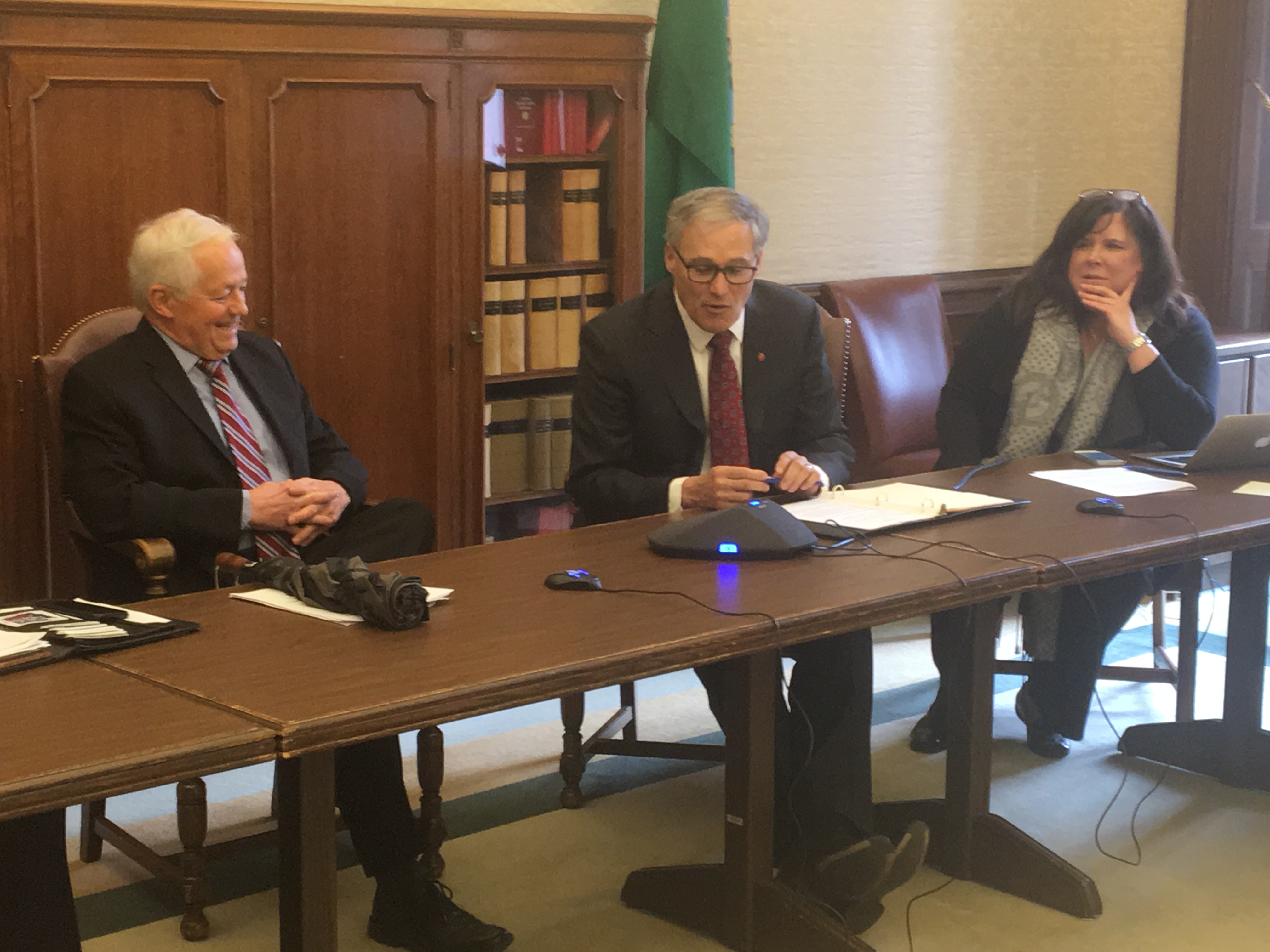AARP Hearing Center
Thank you to the more than 8,000 people from across the state who joined us this afternoon (Wednesday, March 29) for our special telephone town hall with Governor Jay Inslee and Insurance Commissioner Mike Kreidler.
We covered a lot of ground, including the future of health care in Washington state. We discussed how our state stacks up to others in the nation when it comes to providing affordable accessible care; what improvements our state is making to address health care issues facing seniors and to improve their ability to stay in their own homes and communities as they age; and what we are likely to see next in the continuing national debate over health care reform.
We also learned of new state initiatives underway and updates on proposed legislation.
LISTEN TO THE CALL 
No worries if you missed today’s call. We have the full audio of the call available right here. Just click and listen!
FLASH POLLS
We also took a couple of flash polls among today's call participants. The two questions are copied below along with how people voted. Further background on each topic also follows.
Thank you again for participating in the call and for visiting our site for more information. If you have any questions, please email us at aarpwa@aarp.org
AARP Washington
-------------------------------------------------------------------------------------------------------------------------------------------------------
Flash Poll Questions and background
Question #1: For many years, the Veterans Administration has been allowed to negotiate prescription drug prices with drug companies, which has resulted in vets being able to buy drugs for significantly less than the rest of us. Would you support allowing the state and federal government to negotiate prescription drug prices on behalf of Medicare and Medicaid beneficiaries in order to lower the cost of prescription medications?
1.YES / 88%
2.NO / 2%
3.Not Sure / 10%
Question #2: Studies show that a majority of us will need long term care services at some point in our lives. But the costs for such services are skyrocketing, with annual costs for some nursing homes approaching $100,000 per year. Thinking about your own situation, which of the following best describes how you plan to pay for long-term care in the future.
1. Medicare / 22%
2. Personal savings / 13%
3. I have no idea / 44%
4. Private long-term care insurance / 17%
5. Friends and family / 4%
More on Prescription Drug Affordability
AARP has been calling on Congress to protect seniors and taxpayers from being overcharged by the drug company monopoly. The best way to fix health care is to lower costs for all Americans.
Older Americans depend on their prescriptions. From life-saving muscular dystrophy treatments to epi pens, drug companies’ skyrocketing prices are pushing critical medications and prescriptions out of reach for those who need them most. The hardworking taxpayers that fund Medicare shouldn’t have to keep paying billions of dollars so that big drug companies can hire lobbyists and run flashy marketing campaigns.
It's time to let Medicare negotiate lower drug prices and reduce barriers to global price competition by allowing for the safe importation of lower priced drugs. There is no reason for Americans to continue paying the highest prescription drug prices in the world.
More on Long Term Care
Long-term services and supports provide aging adults with care they need to live independently, including help with personal care, medical assistance, transportation, meals and more.
Unfortunately, the 22% of participants in today’s call who said they are counting on Medicare to cover their long-term care costs are in for a shock. Medicare does not cover long-term care.
Long-term care is expensive. One year in a skilled nursing facility can cost more than $80,000. And unfortunately, recent surveys show that 25% of Baby Boomers in Washington State have less than $25,000 in personal savings.
Seniors who do not have long-term care insurance, or whose insurance is not comprehensive enough, must spend their savings down to bankruptcy to qualify for Medicaid long-term care coverage.
In fact, more than 90% of Americans are uninsured for long-term care, and 70% will rely on public sources such as Medicaid to cover their long-term care costs.
AARP is urging the state legislature to prepare for the state’s rapidly aging population by helping families better prepare for their long-term care needs. We can do that by maintaining state funding for home and community based supports, supporting the role of family caregivers, and continuing to explore public/private long term care financing solutions.































































